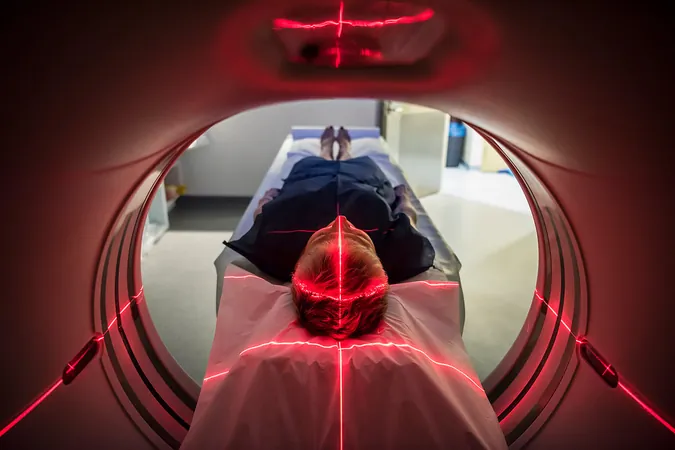
Revolutionary Breakthroughs in Urology: Highlights from EAU 2025
2025-04-10
Author: Ming
Game-Changing Studies Unveiled
The 40th Annual European Association of Urology Congress held in stunning Madrid showcased an impressive array of scientific advancements in urology. Among the highlights, Dr. Betty Wang shared insights on three groundbreaking studies she urges everyone to pay attention to.
Micro-Ultrasound vs. MRI: A Diagnostic Game Changer
First on the list is the OPTIMUM clinical trial, which pitted micro-ultrasound against MRI for prostate cancer diagnosis. Dr. Wang noted that this international study revealed that micro-ultrasound is just as effective as MRI fusion biopsies for detecting significant prostate cancer. This could streamline procedures, potentially cutting down costs by eliminating the need for IV contrast required in multi-parametric MRIs.
Durvalumab Shines in Bladder Cancer Treatment
The second significant study focused on the NIAGARA trial, which investigated the perioperative use of durvalumab alongside standard neoadjuvant chemotherapy for muscle-invasive bladder cancer (MIBC). With recent FDA approval for this regimen, the findings presented at EAU demonstrated that adding durvalumab did not hinder surgical outcomes—actually, it increased the rates of radical cystectomy from 83% to 88%. This finding is expected to change how MIBC is treated.
Revolutionizing Renal Cell Carcinoma Surveillance
Lastly, Dr. Wang discussed an innovative study on urine Glycosaminoglycan (GAG) scores to monitor recurrence in intermediate and high-risk non-metastatic clear cell renal cell carcinoma. This groundbreaking approach boasts a staggering 97% negative predictive value, meaning a negative test can almost certainly indicate the absence of recurrence. This could significantly lower unnecessary imaging costs and minimize radiation exposure for patients.
These pivotal studies suggest that the future of urology may be brighter than ever, offering promising alternatives and enhanced safety for patients. Keep an eye on these developments, as they could redefine standards of care in urologic oncology.




 Brasil (PT)
Brasil (PT)
 Canada (EN)
Canada (EN)
 Chile (ES)
Chile (ES)
 Česko (CS)
Česko (CS)
 대한민국 (KO)
대한민국 (KO)
 España (ES)
España (ES)
 France (FR)
France (FR)
 Hong Kong (EN)
Hong Kong (EN)
 Italia (IT)
Italia (IT)
 日本 (JA)
日本 (JA)
 Magyarország (HU)
Magyarország (HU)
 Norge (NO)
Norge (NO)
 Polska (PL)
Polska (PL)
 Schweiz (DE)
Schweiz (DE)
 Singapore (EN)
Singapore (EN)
 Sverige (SV)
Sverige (SV)
 Suomi (FI)
Suomi (FI)
 Türkiye (TR)
Türkiye (TR)
 الإمارات العربية المتحدة (AR)
الإمارات العربية المتحدة (AR)